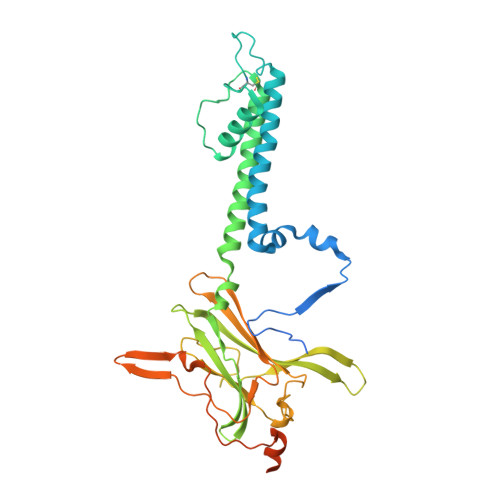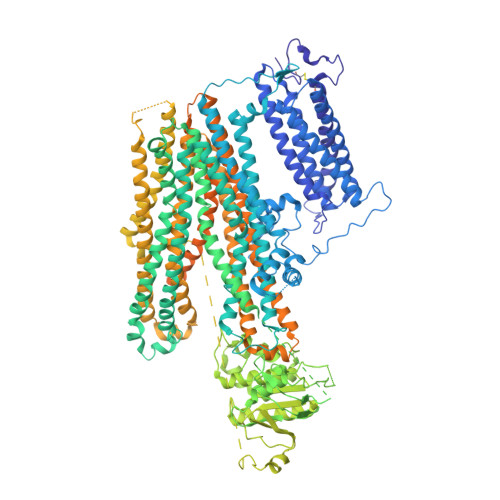Structure of an open K ATP channel reveals tandem PIP 2 binding sites mediating the Kir6.2 and SUR1 regulatory interface.
Driggers, C.M., Kuo, Y.Y., Zhu, P., ElSheikh, A., Shyng, S.L.(2024) Nat Commun 15: 2502-2502
- PubMed: 38509107
- DOI: https://doi.org/10.1038/s41467-024-46751-5
- Primary Citation of Related Structures:
8TI1, 8TI2 - PubMed Abstract:
ATP-sensitive potassium (K ATP ) channels, composed of four pore-lining Kir6.2 subunits and four regulatory sulfonylurea receptor 1 (SUR1) subunits, control insulin secretion in pancreatic β-cells. K ATP channel opening is stimulated by PIP 2 and inhibited by ATP. Mutations that increase channel opening by PIP 2 reduce ATP inhibition and cause neonatal diabetes. Although considerable evidence has implicated a role for PIP 2 in K ATP channel function, previously solved open-channel structures have lacked bound PIP 2 , and mechanisms by which PIP 2 regulates K ATP channels remain unresolved. Here, we report the cryoEM structure of a K ATP channel harboring the neonatal diabetes mutation Kir6.2-Q52R, in the open conformation, bound to amphipathic molecules consistent with natural C18:0/C20:4 long-chain PI(4,5)P 2 at two adjacent binding sites between SUR1 and Kir6.2. The canonical PIP 2 binding site is conserved among PIP 2 -gated Kir channels. The non-canonical PIP 2 binding site forms at the interface of Kir6.2 and SUR1. Functional studies demonstrate both binding sites determine channel activity. Kir6.2 pore opening is associated with a twist of the Kir6.2 cytoplasmic domain and a rotation of the N-terminal transmembrane domain of SUR1, which widens the inhibitory ATP binding pocket to disfavor ATP binding. The open conformation is particularly stabilized by the Kir6.2-Q52R residue through cation-π bonding with SUR1-W51. Together, these results uncover the cooperation between SUR1 and Kir6.2 in PIP 2 binding and gating, explain the antagonistic regulation of K ATP channels by PIP 2 and ATP, and provide a putative mechanism by which Kir6.2-Q52R stabilizes an open channel to cause neonatal diabetes.
Organizational Affiliation:
Department of Chemical Physiology and Biochemistry, School of Medicine, Oregon Health & Science University, Portland, OR, 97239, USA. driggerc@ohsu.edu.




















